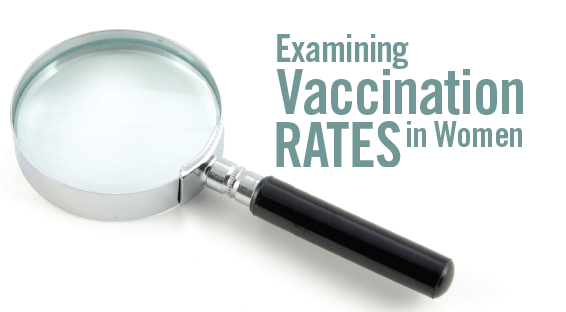Research has repeatedly shown that adults in the United States are under-immunized against a number of vaccine-preventable diseases. According to the CDC, up to 50,000 adult Americans die from these diseases every year. Women appear to play an important role in this equation, with some studies showing that they generally have more health maintenance visits with providers and are often in a position to encourage others to take care of various health maintenance issues, including immunizations.
In September 2014, the National Foundation for Infectious Diseases and Rite Aid conducted a telephone survey of 1,000 randomly selected U.S. women, aged 26 to 74. The survey sought to gain an understanding of women’s attitudes, behaviors, and intent regarding vaccinations and adult vaccines.
Important Findings
“While 70% of women reported that they had received at least one vaccination in the previous 5 years, most said they were not up to date with immunizations when we went through the various vaccines in our survey,” says study co-investigator Susan J. Rehm, MD (Figure). When asked about all the vaccinations they personally remembered receiving in the past 5 years, the reported rates ranged widely but were all below 70%:
♦ Influenza (53%).
♦ Tetanus (24%).
♦ Pneumonia/pneumococcal (20%).
♦ Shingles (10%).
♦ Tetanus, diphtheria, pertussis (7%).
♦ Hepatitis (5%).
♦ Whooping cough (3%).
♦ Human papillomavirus (2%).
The survey also revealed that 26% of respondents reported that they did not receive any of these vaccines in the past 5 years, and another 5% were unaware of their vaccination status. Importantly, researchers also found that 60% of women said they intended to receive a vaccination in the coming 5 years. “The vaccine-preventable disease they perceived as being the most serious threat to their health in the next 5 years was influenza, but nearly half of women said they did not intend to get a flu vaccine during that time,” says Dr. Rehm. “This indicates that perceived risk doesn’t necessarily align with vaccination behavior.”
When women who did not receive a flu shot in the past year were asked to provide the primary reason for their decision, the misconception that flu shots cause influenza was the leading reason cited by respondents (28%). Other responses included that they:
♦ Do not ever get sick or do not get sick often (22%).
♦ Do not want their body exposed to the chemicals, the process, or medication (15%).
♦ No reason (14%).
♦ Do not think flu shots work (12%).
♦ Do not like receiving shots (7%).
♦ Forgot to get flu shots (3%).
♦ Felt it was inconvenient (3%).
♦ Did not have time (3%).
♦ Flu shots were too expensive (2%).
♦ Cited that flu shots were not covered by their insurance (1%).
Immunization rates for various vaccines tended to be highest among women aged 65 and older, explains Dr. Rehm. “In this age group, patient visits are sometimes planned around the administration of various vaccines, particularly for immunizations against influenza and pneumococcal disease,” she says. “The need for certain vaccines is triggered by age, which could be a factor as to why immunization rates tend to be better among older women. We’re still missing the mark on the Healthy People 2020 standards, but vaccination rates are far better for older women than they are for those aged 18 to 64.”
Education Needed
Education of both patients and healthcare providers is paramount to helping increase immunization rates among adults, says Dr. Rehm. “The story of adult immunization is one of missed opportunities,” she adds. “Few adults make an appointment to see their doctor solely for the reason of getting vaccinated. Therefore, providers in all healthcare settings should view every encounter with adults as a potential opportunity for vaccination.”
Dr. Rehm urges healthcare providers to direct patients to visit www.adultvaccination.org—which features reliable information on adult immunizations for patients and providers —and www.cdc.gov. The CDC website includes the 2015 adult immunization schedule and a quiz that patients can complete to determine which vaccinations may be best for them.
The finding that 30% of women consulted their pharmacist for immunization education or information about infectious diseases is viewed by Dr. Rehm as a sign that consumers are increasingly seeking vaccination information from providers, be it their pharmacist, nurse, nurse practitioner, physician assistant, or physician. Nearly 80% of women in the survey stated they would find it helpful to receive a printed immunization evaluation that includes a checklist of recommended immunizations based on their age and health. “This is also something that would be useful in medical practices,” says Dr. Rehm.
To help provide immunization evaluations and improve vaccination education and rates, many practices have had success designating employees in physician offices to serve as a vaccination champion. “These people can help implement immunization efforts,” Dr. Rehm says. “Research has shown that the most powerful factor in compelling patients to get vaccinated is a recommendation from a healthcare provider.”



 Janine Anthes
Janine Anthes